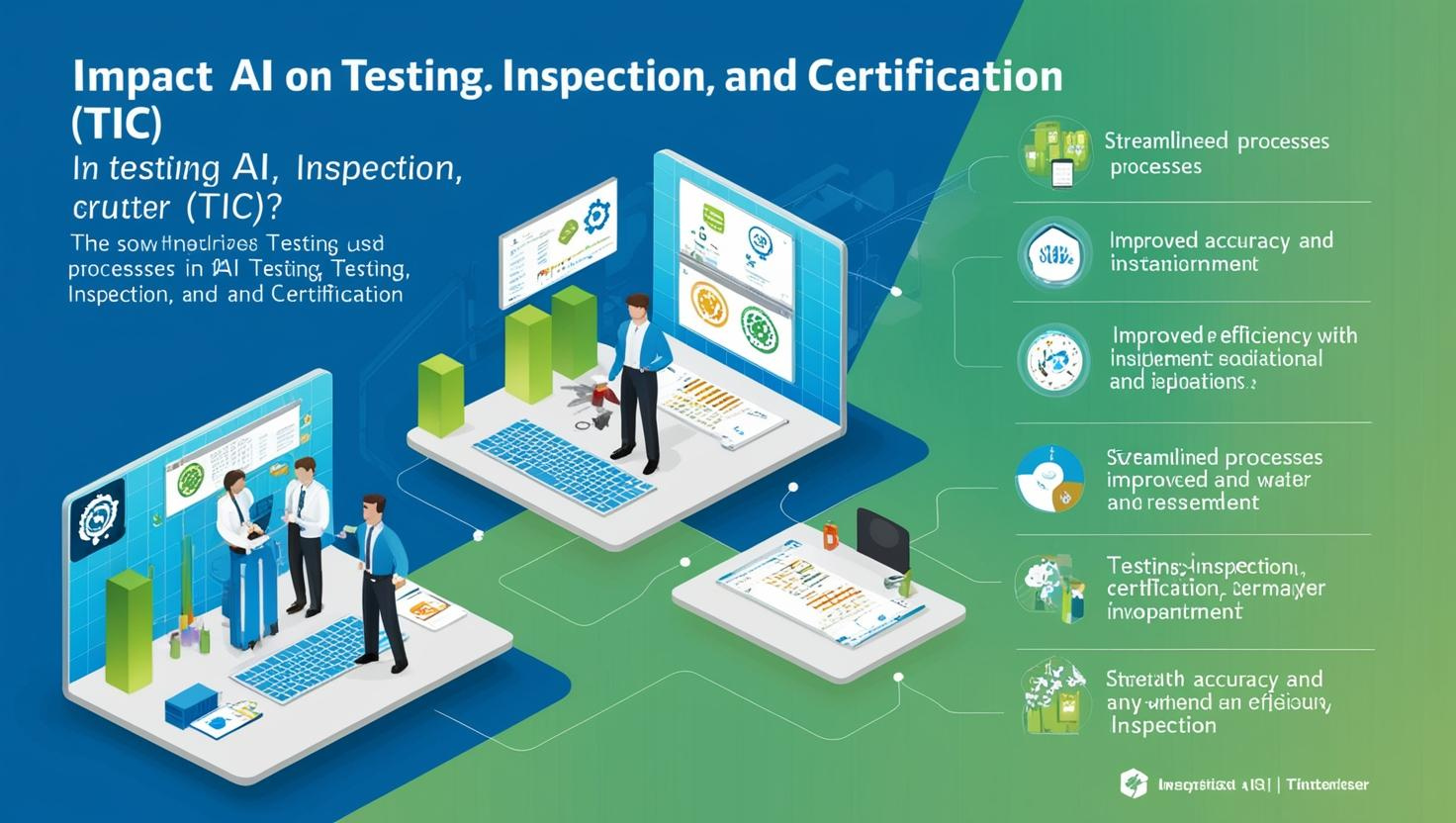The Testing, Inspection, and Certification (TIC) industry stands at the threshold of a major transformation, driven by the integration of Artificial Intelligence (AI). Traditionally reliant on human expertise and manual processes, the TIC sector is embracing AI technologies to enhance efficiency, accuracy, and speed, reshaping the way quality assurance is conducted across industries.
The Rise of AI in TIC
AI is revolutionizing TIC processes by automating repetitive tasks, enabling predictive analysis, and ensuring real-time decision-making. Machine learning algorithms, computer vision, natural language processing, and robotics are now being deployed to optimize inspections, detect anomalies, and predict potential failures long before they occur.
By integrating AI, TIC companies can deliver faster, more reliable results while reducing operational costs. This shift not only improves service quality but also helps organizations meet growing regulatory requirements and customer expectations for transparency and accountability.
Download PDF Brochure @ https://www.marketsandmarkets.com/pdfdownloadNew.asp?id=5352498
Key Areas of Transformation
- Automated Inspections and Defect Detection
AI-powered systems, particularly computer vision technologies, are significantly improving the accuracy of inspections. Drones and robots equipped with AI sensors can inspect hard-to-reach or hazardous areas—such as offshore platforms or high-rise structures—capturing high-resolution images and identifying defects with precision beyond human capability.
- Predictive Maintenance and Risk Assessment
Through advanced data analytics, AI can predict potential failures and suggest maintenance needs before issues escalate. Predictive maintenance enhances equipment reliability and reduces downtime, providing a proactive approach to quality assurance.
- Streamlining Certification Processes
AI-driven platforms can automate document verification, audit scheduling, compliance tracking, and reporting. These systems reduce administrative bottlenecks, enabling faster certifications and ensuring that regulatory standards are consistently met.
- Enhancing Data Management and Analytics
The TIC industry generates massive amounts of data. AI excels at handling big data, extracting actionable insights, and identifying patterns invisible to human analysts. Enhanced data management leads to smarter decision-making and the creation of more value-added services for clients.
- Improving Safety and Compliance
AI systems can monitor real-time operations and trigger alerts if safety or compliance breaches are detected. This not only ensures higher levels of workplace safety but also strengthens companies’ regulatory compliance frameworks.
Benefits of AI Integration in TIC
- Increased Efficiency: Automation reduces the time taken for testing and inspection processes.
- Higher Accuracy: AI minimizes human errors and improves defect detection rates.
- Cost Savings: Operational costs are significantly reduced through optimized resource allocation.
- Scalability: AI solutions can easily scale to accommodate growing volumes of testing and certification demands.
- Enhanced Client Satisfaction: Faster turnaround times and more reliable results enhance customer trust and loyalty.
Challenges and Considerations
Despite its many advantages, integrating AI into the TIC industry comes with challenges. Data security, ethical AI usage, regulatory acceptance, and the need for skilled personnel to manage AI systems are critical issues that must be addressed. Moreover, transparency in AI-driven decisions is essential to maintain client confidence.
The Road Ahead
The future of the TIC industry will be shaped by continuous innovation. Companies that invest in AI capabilities, collaborate with technology providers, and upskill their workforce will be best positioned to lead this transformation. As AI technologies mature, we can expect even more sophisticated solutions—such as autonomous testing, blockchain-based certification, and AI-driven regulatory audits—that will redefine quality assurance standards globally.

